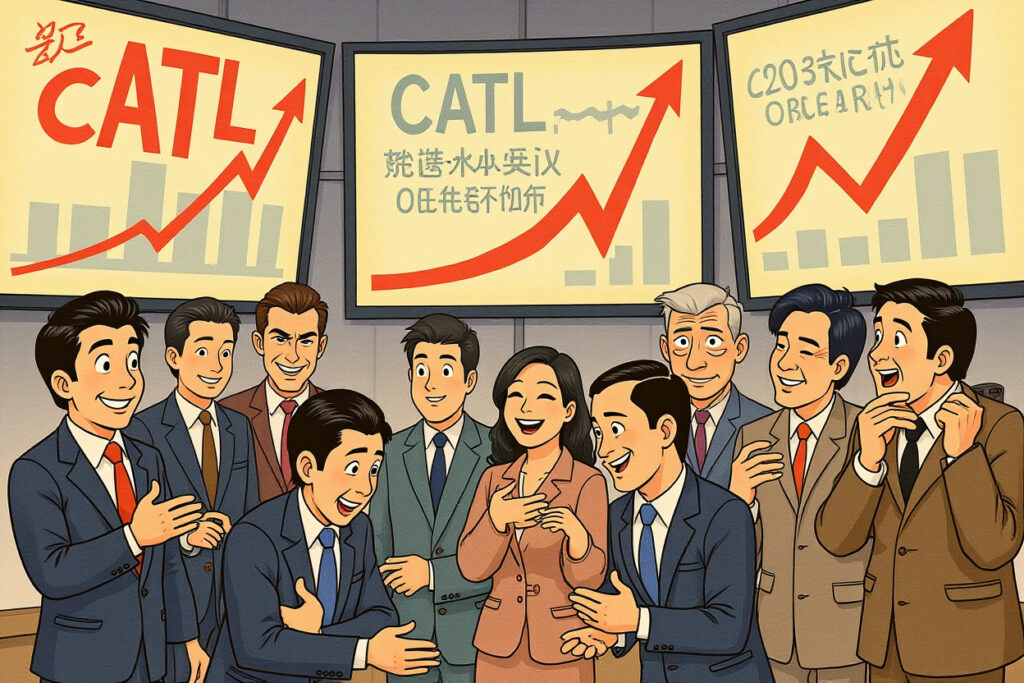Energy Storage Industry at Critical Juncture as Copycat Behavior Threatens Innovation
The global energy storage market faces a pivotal moment as industry leaders gather at the 2025 World Energy Storage Conference. CATL (宁德时代) founder and chairman Zeng Yuqun (曾毓群) delivered a stark warning about the damaging effects of copycat behavior that has permeated the sector. His comments come as China’s energy storage industry experiences explosive growth alongside concerning trends of imitation rather than innovation.
Zeng’s remarks highlight a critical challenge facing China’s technology sector: the tension between rapid commercialization and sustainable innovation. As capital floods into the energy storage market, many companies are choosing shortcuts over substantial research and development. This copycat behavior threatens to undermine the industry’s long-term competitiveness and technological advancement.
Executive Summary: Key Market Implications
– CATL leadership warns that copycat behavior in energy storage threatens industry innovation and product quality
– Widespread imitation practices could lead to project failures and undermine investor confidence in Chinese energy storage technology
– Companies focusing on parameter manipulation rather than genuine R&D risk creating systemic reliability issues
– Industry requires stronger innovation ecosystem to maintain China’s competitive advantage in global energy storage markets
– Regulatory intervention may be necessary to address quality assurance problems and intellectual property protection
Capital Markets Driving Short-Term Thinking
The rapid expansion of China’s energy storage sector has attracted significant capital investment, creating both opportunities and challenges. According to market data from the China Energy Storage Alliance (中关村储能产业技术联盟), the sector has grown at an annual rate of over 30% for the past three years. However, this growth has come with increased instances of copycat behavior as companies seek quick market entry.
Zeng Yuqun specifically noted that “under capital pressure, many companies choose to take shortcuts, tending toward抄袭和复制 (copying and replication) rather than independent research and development.” This copycat behavior manifests in several ways, from direct technology replication to more subtle forms of imitation that bypass substantial innovation investment.
Market Consequences of Imitation Strategies
The prevalence of copycat behavior creates several market distortions. First, it compresses development timelines artificially, allowing companies to bring products to market without adequate testing. Second, it drives down prices through cost avoidance rather than genuine efficiency improvements. Third, this copycat behavior ultimately reduces overall industry profitability and investment returns.
Industry analysts note that companies engaging in copycat behavior often achieve short-term market share gains but struggle with long-term sustainability. Without proprietary technology and genuine innovation, these companies become vulnerable to market shifts and technological disruptions. The current copycat behavior trend could potentially create systemic risks for the entire energy storage value chain.
Innovation Investment Gap Widens
Zeng posed a fundamental question to industry participants: “Innovation requires burning money—the problem is, if everyone wants to take shortcuts, who will actually do innovation?” This question gets to the heart of the innovation dilemma facing China’s technology sectors. While copycat behavior provides immediate returns, it undermines the foundational research necessary for breakthrough advancements.
Data from the Ministry of Industry and Information Technology (工业和信息化部) shows that R&D investment ratios vary dramatically across the energy storage sector. Leading companies like CATL invest over 6% of revenue in research and development, while many newer market entrants allocate less than 2% to genuine innovation. This investment gap creates an innovation deficit that copycat behavior cannot address.
Quality and Reliability Concerns Mount
Perhaps most concerning are Zeng’s comments about product quality and reliability. He noted that many companies “keep making adjustments to product parameters and making arbitrary decisions about quality assurance lifespan” rather than investing in proper testing and validation. This approach to copycat behavior extends beyond technology imitation into performance claims that may not reflect real-world conditions.
Industry data supports these concerns. Projects utilizing equipment from companies known for copycat behavior show significantly higher failure rates and shorter operational lifespans. In some cases, actual operational lifespan falls “far below promised specifications,” creating potential financial losses for project developers and investors. This copycat behavior regarding performance claims could damage market confidence in Chinese energy storage technology overall.
Building a Sustainable Innovation Ecosystem
Zeng emphasized that addressing these challenges requires building “an innovative industry ecosystem” that supports genuine technological advancement. This means creating market conditions that reward innovation rather than copycat behavior. Several structural changes could help achieve this goal, including stronger intellectual property protection, better quality standards, and more sophisticated capital allocation.
The Chinese government has recognized these challenges. Recent policy documents from the National Development and Reform Commission (国家发展和改革委员会) emphasize the importance of original innovation in strategic emerging industries. However, effectively addressing copycat behavior requires coordinated action across regulatory bodies, industry associations, and financial markets.
Regulatory Responses to Copycat Challenges
Regulatory authorities are beginning to respond to the problems created by copycat behavior. The State Administration for Market Regulation (国家市场监督管理总局) has increased scrutiny of product claims in the energy storage sector. New quality standards specifically address performance validation and lifespan testing requirements.
Additionally, intellectual property enforcement has strengthened, with several high-profile cases involving technology infringement in energy storage systems. These regulatory responses aim to create disincentives for copycat behavior while protecting companies that invest in genuine innovation. However, effective enforcement remains challenging given the rapid pace of market development.
Investment Implications and Market Outlook
For investors and market participants, the prevalence of copycat behavior creates both risks and opportunities. Companies engaged in substantial R&D may face short-term competitive disadvantages but possess stronger long-term prospects. Conversely, companies relying on copycat behavior may achieve rapid growth but face sustainability challenges as market standards evolve.
Industry analysts recommend careful due diligence regarding technology sourcing, R&D investment levels, and product validation processes. Companies with proven innovation capabilities and robust intellectual property portfolios likely offer better long-term investment prospects despite potential short-term pressure from copycat competitors.
Global Competitiveness at Stake
China’s position in the global energy storage market depends on moving beyond copycat behavior to genuine innovation leadership. While Chinese companies currently dominate manufacturing capacity, technological leadership remains contested. Overcoming the temptation of copycat behavior is essential for maintaining competitive advantage in increasingly sophisticated global markets.
International competitors continue advancing energy storage technology through substantial R&D investments. If Chinese companies cannot transition from copycat behavior to innovation leadership, they risk losing market share in high-value segments to competitors from Korea, Japan, and increasingly, North America and Europe.
Path Forward for Energy Storage Innovation
The energy storage industry stands at a critical inflection point. Addressing the challenges of copycat behavior requires concerted effort across multiple dimensions. Companies must prioritize genuine innovation over shortcut approaches. Investors need to reward long-term R&D investment rather than short-term market share gains. Regulators should strengthen quality standards and intellectual property protection.
Zeng Yuqun’s comments serve as an important wake-up call for industry participants. The choice between copycat behavior and genuine innovation will determine not only individual company success but also China’s broader position in the global energy technology landscape. Building sustainable competitive advantage requires moving beyond imitation to create truly innovative solutions that address the world’s energy storage needs.
Market participants should monitor regulatory developments, technological advancements, and competitive dynamics closely. Companies demonstrating authentic innovation capabilities rather than copycat behavior likely represent the best opportunities for long-term investment and partnership. The transition from imitation to innovation, while challenging, offers substantial rewards for companies and investors who navigate this evolution successfully.




